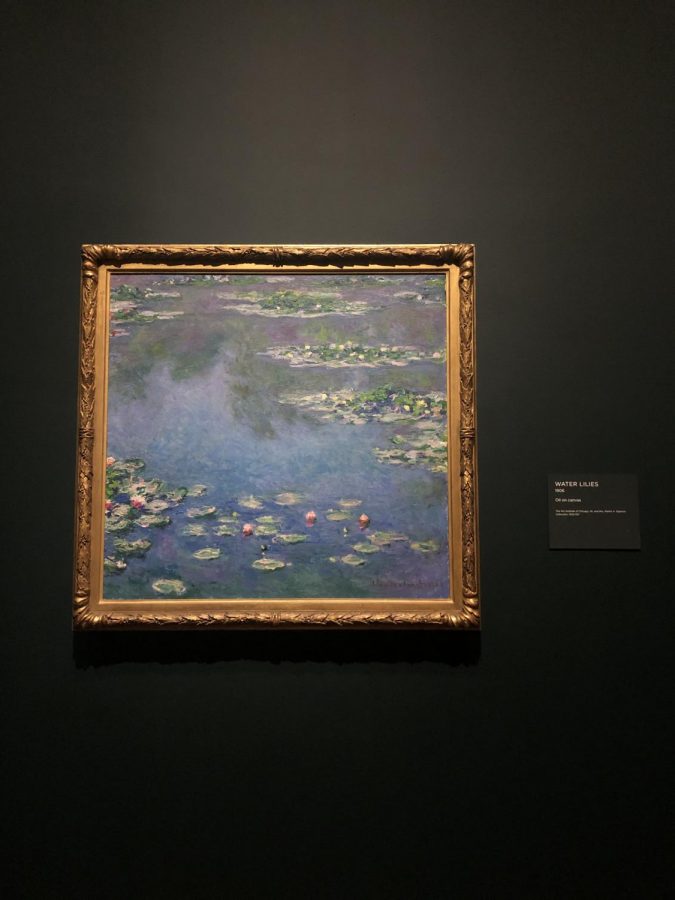Bringing Paris to Chicago: The Art of Claude Monet
May 13, 2021
The Art Institute of Chicago houses some of the most esteemed pieces of artwork in the world. Just this past year, the Institute introduced Chicago and Monet, an exhibit documenting Oscar-Claude Monet’s life through his artwork. Monet was a French impressionist painter during the years of 1840-1926 and is mostly known for starting the Impressionism movement. At the time, impressionism wasn’t a widely regarded technique and was instead rejected for its blurred-like quality and uncharacteristic colors.
The Art Institute has one of the largest collections of Monet, but this new gallery has brought light to other pieces that aren’t in the daily eye. Monet and Chicago’s estimated wait time is about 30 minutes to an hour. Located on the second floor, you can roam around the impressionism to the Renaissance periods, making time go by quickly. The gallery is definitely worth the wait, like Chicago Tribune said in 1888, “Why go to Paris since Paris has come to Chicago?”
Monet and Chicago have always had a tight connection to each other. Though Monet never came to Chicago himself, many of his artwork came to the United States through the French art dealer, Paul Durand-Ruel. Viewers also get introduced to three art connoisseurs from Chicago, who acquired over 20-50 Monet pieces in their lifetime, contributing to the Art Institutes large Monet collection.
The gallery gives viewers a glimpse of Monet’s life during his childhood in Normandy, France to his coastal vacations in Pourville and Giverny. Before Monet became known as the “father of impressionism,” he was a well-known caricaturist. The gallery displays some of his caricatures, which to some is strangely compelling knowing what his celebrated art style is.
Each room displays a different series that depicts a period in his life. Something I found so enchanting about the gallery is that each room conveys a parallel sense of emotion to the series. For example, in Monet’s water lily series, though it’s a close-up, the room’s environment makes you feel like you are physically with Monet overlooking his water garden in his Giverny home.
My favorite section of the gallery was the series dedicated to Monet’s time on the coasts at Étretat, Pourville, and Varengeville. In all honesty, any Monet painting based near a coast of water is stunning. The vast usage of blues, greens, pinks, and reds is what makes the paintings feel so ethereal. Chicago and Monet is ultimately the perfect spring and summer exhibition to attend.
Another feature of the gallery is if you bring a device with headphones you can listen to their digital audio tour. I advise if you do this because the audio tour is very insightful about the history behind certain pieces.
The Art Institute has extended the showing of Chicago and Monet till June 14. 2021. Another interesting way to view the gallery is digitally, anyone can access their online website which displays a smaller selection of the pieces shown in person.




